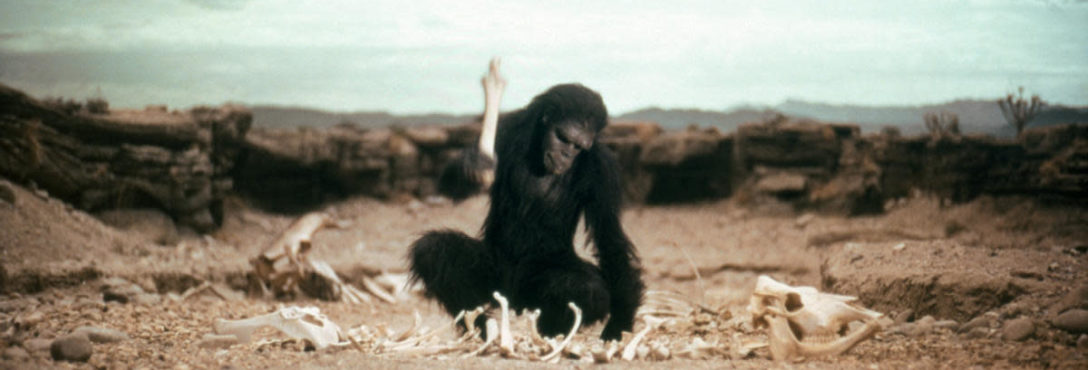What exactly is ‘ecocinema’? It’s a question I get asked, and ask myself, rather a lot. When I first started researching ecocinema I had assumed it would simply be films with obviously themed ecological concerns and messages. An Inconvenient Truth, Chasing Ice and Cowspiracy sprung to mind as good examples of this. However, while eco-documentaries such as these are most certainly a vital and important part of what constitutes ecocinema, they are but one facet of a more complex whole. The term ecocinema was coined in 2004 by Scott Macdonald in Towards an Ecocinema. At a similar time David Ingram also explored the idea of an ecological cinema, using the term as a means of certifying if a film had an emphatic environmental message. As time has gone by the uses and understandings of the category have become more complex. While a more traditional, earlier, form of ecocriticism was seemingly concerned with identifying if something did or did not have a positive ecological message, ecocinema now has expanded its scope towards films that are perhaps not self-evidently about nature.
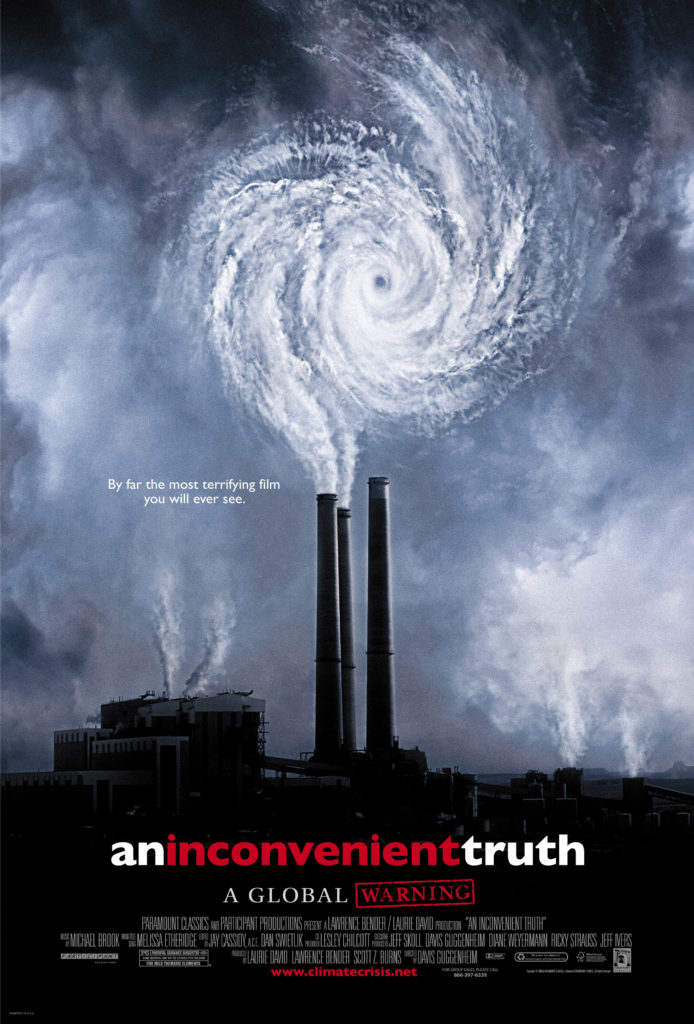
As Willoquet-Maricondi argues in Framing the World, films that at face value might not be ecologically oriented ‘nonetheless offer us needed perspectives on the relations between the human and nonhuman’ (Willoquet-Maricondi: 2010, 3). This human/nonhuman paradigm sits at an unprecedented crisis point in the context of a rapidly warming climate at the start of the 21st century. As Timothy Clark argues – ‘The Anthropocene brings to an unavoidable point of stress the question of the nature of Nature and of the human. It represents, for the first time, the demand made upon a species consciously to consider its impact as a totality upon the whole planet’ (2015, 16). By way of an example, an extremely hot day in Australia last year resulted in the death of 1/3rd of the countries flying fox population, who fatally succumbed to heat exhaustion. It’s staggeringly sad to consider, but anthropogenically induced climate change is killing animals, unsettling ecosystems and straining the balance of life as we know it.
In these troubling times I am interested in understanding and investigating the ways in which human/nonhuman relations are structured and evoked through cinema. What might cinema be able to do from an ecological standpoint, and what ecocritical perspectives and meanings might be lurking under its surface? My own research looks at contemporary science fiction cinema from an ecocritical perspective. Today however I want to simply demonstrate how an ecocritical analysis allows for new meanings to be unlocked from films that might not appear to be self-evidently environmental. Films both consciously and unconsciously produce ideological meaning pertaining to how humans relate the environment and the creatures that inhabit it. Sean Cubitt’s analysis of Lord of the Rings in his book EcoMedia is a great example of this. Cubbitt highlights the ways in which creatures like the Balrog are the consequences of the dwarves ‘delving too deeply’ into the belly of the mountain, releasing ancient monsters analogous to our own excavation of toxic fumes from drilling for oil. The ways in which the film stages the Ents, who are attuned with their environment, against Saruman, who is an industrious power hell-bent on cutting down every tree and burning every village, further points towards the way in which ecological meanings are layered into the narrative. These films stage the “good” races and characters as those who are sustainably in harmony with their environment and the “bad” as those who relentlessly consume the landscape’s materials. While Lord of the Rings might not be self-evidently about nature, it can be read as ecocinema through the constellation of eco-perspectives it produces. “A wizard should know better!” bellows Treebeard upon seeing the deforested desolation of Fangorn, suggesting that perhaps humanity should know better in turn.
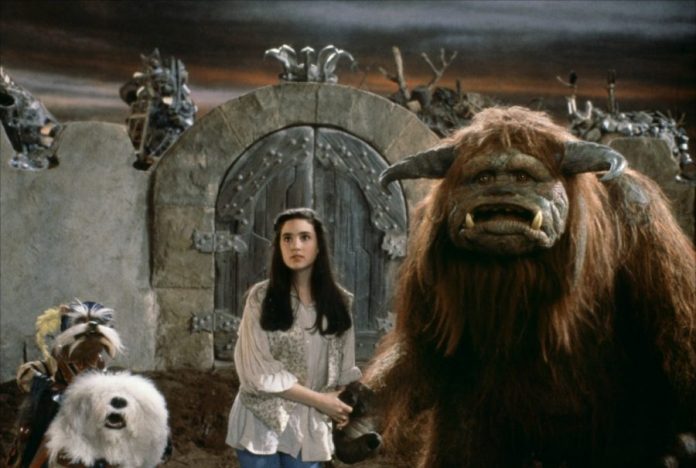
Jim Henson’s now cult classic Labyrinth was a firm favourite of mine growing up. Today, in considering it through the ecological imperatives of living on a dying planet, it is my hope that new ways of understanding the film might be unearthed. What stands out in my fond childhood memories of the film are the fantastical environments it takes place in. Whether it’s the long shots of the seemingly endless corridor’s of The Goblin King’s maze, the “helping hands” that catch Jennifer Connely’s Sarah as she plummets into the oubliette or the alarming secretions from “The Bog of Eternal Stench”, it’s clear that Labyrinth’s landscapes are as memorable as its inhabitants. In re-watching the film recently I was struck by the agency and vibrancy lent to these environments and objects that, outside of the context of the film, are often considered inert or in some manner lifeless. Upon entering the labyrinth Sarah sits down exhausted, unable to figure out how to progress. A small worm wearing a scarf looks over at her. “‘Allo” it says, much to Sarah’s shock, and my own continued delight. In chatting away with this worm, who asks her to “come in and meet the Mrs.”, Sarah is reliably informed how best to progress. What’s of further interest is the moss that lines the walls in these scenes, it wriggles around with a chthonic curiosity as it considers Sarah as she sits nearby. Lidded eyes open and close on the ends of this moss, lending a sense that the labyrinth itself is considering her. Rather than the environment simply being a backdrop to a human story, there’s a sensuous impression that the non-human world is as alive and agential as the film’s protagonist, who is only able to progress by conversing with the tiny creatures of this fairytale land.

Of all environmental backdrops, stones and rocks might be considered the most lifeless and dull. As Jeffrey Cohen astutely puts it in Stone: An Ecology of the Inhuman; ‘Despite relegation to a trope for the cold, the indifferent, and the inert, stone discloses queer vivacity, and a perilous tender of mineral amity’ (2015: 6). Interestingly enough Labyrinth seems curiously attentive to the vivacity of the lithic; stones play a particularly important role in the film that seems of reverberative relevance to humanity’s new found geological agency, as per the Anthropocene context. When Sarah uses a piece of chalk to draw arrows, indicating where she has come from, the stone slabs are lifted up by critters beneath them and rotated around. Gigantic Easter Island-esque faces carved into caves shout out to Sarah and her companion Hoggle; “turn back!” “you’re going the wrong way!” In doing so we’re again invited to consider the ways in which the world around us is alive, acting on us as we act on it. Ludo’s kinship with the rocks is perhaps the best example of this in action. Ludo, a gigantic bear-like creature, is able to howl and seek help from boulders, rocks and stones, which he calls his “friends”. The friendship between Ludo and the rocks lets them cross the foul bog unscathed, and helps them defeat the weaponised goblins in Jareth’s castle. Donna Haraway argues that in the turbid times of the Anthropocene and the Capitalocene we need to ‘make odd kin’ (2016), that is, make unexpected partnerships and allegiances with other forms of life. Ludo’s urge to make new friends, and his seemingly hereditary kinship with the Earth itself, seems a great example of such an act of odd kin making. In the unlikely friendship between stones and a monosyllabic bear new ways of navigating the world through a sense of interdependency and ecological entanglement are revealed. The vastly expanded scales of geological and temporal thinking required in the Anthropocene runs the risk of emphasising separations between the human and the inhuman, at the expense of nurturing material intimacies between them (Cohen: 2015, 9). Labyrinth’s seems to bridge the yawing gap between stones, Ludo the bear and Sarah the human to present them in mutually beneficial couplings. As Cohen argues, ‘Stone is primal matter, inhuman in its duration. Yet despite its incalculable temporality, the lithic is not some vast and alien outside. A limit-breaching intimacy persistently unfolds’ (2015, 2). Henson’s howling bear is one such limit-breaching window into accessing the lithic.
The ecological perspectives of the narrative are not locked purely to its vibrant boulders. Much like the way in which Saruman’s Isengard and Sauron’s Mordor are presented as barren wastelands, Jareth’s castle is industriously framed in turn. His goblin army operate huge mechanised constructs which spew steam and belch black smoke. Jareth’s poisoned peach works as another example of this goblin king’s use and abuse of natural resources for his insidious purposes. The “bad” characters are those that are burning materials and weaponising matter, whereas the “good” are those like Ludo and Sarah. Making friends with stones is represented as a more ethical approach to living in the labyrinth than manipulating matter to your own means and ends. In the Anthropocene human beings have made a marked impact on the biosphere and the rock fossil record. If we were perhaps able to attune with stones, and understand their importance in the way that Ludo does, then better ways of co-existing with the Earth might be found.
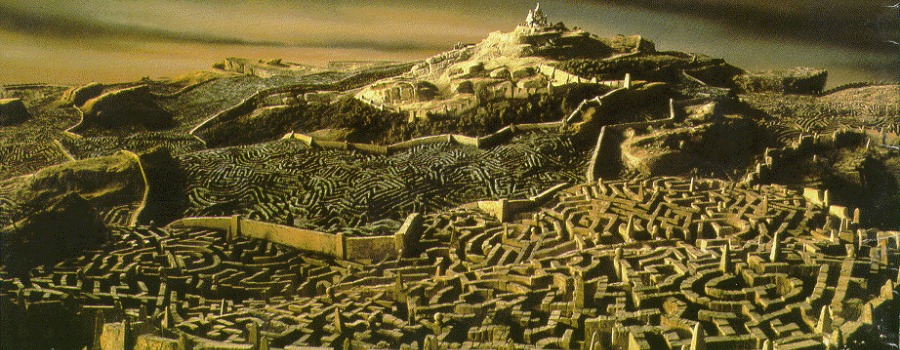
There’s also a anticipatory sense of hyperobjectivity to Henson’s labyrinth. In long-shots of the maze it stretches out interminably to the horizon; a kaleidoscopic patchwork of corridors and sequestered keeps. Timothy Morton, in Hyperobjects: Philosophy and Ecology at the End of the World argues that in the Anthropocene context humanity is confronted with objects that are ‘massively distributed across space and time relative to humans’ (2013, 1). Global warming is a hyper object, something we can only experience in slithers at a time. An unseasonably hot day is a slither of the hyper object of global warming, as is the aforementioned mass-death of Australia’s bat population. ‘For what comes into view for humans at this moment is precisely the end of the world, brought about by the encroachment of hyperobjects, one of which is assuredly Earth itself, and its geological cycles demand a geophilosophy that doesn’t think simply in terms of human events and human significance’ (Morton: 2013, 7). Without attuning with the rocks and the creatures that inhabit the twists and turns of the eponymous dungeon, Sarah would have failed to navigate her way through to Jareth’s castle. Labyrinth, in presenting its own hyperobject (and no, I’m not talking about David Bowie’s codpiece), and in unfurling a means of navigating it precisely through thinking and acting beyond the human, announces itself of playful relevance to the post-anthropocentric demands of a warming climate.
Ultimately, Labyrinth can be seen to pay attention to creatures and forms of life that are almost without exception nonhuman, and often wonderfully peculiar. This realm is awash with all manner of life, from cantankerous doorknobs to rambunctious fox-knights. In doing so the film can be seen to notice and focus on the role and agency of that which is not human. Making friends and collaborating with these strange environments and folkloric creatures is situated ethically within the text as the best way for navigating the confusing topographies of the labyrinth’s hyperobjective meanderings. Such a standpoint resounds nicely with the renewed urgency for humanity to collaborate and consider the effects of anthropogenically induced climate change on the nonhuman natural environment. When our carbon emissions are warming waters in the North Sea, which is killing sand eels, which in turn is causing puffins and guillemots to starve, new ways of existing with the nonhuman become imperative. As Tsing, Swanson, Bubandt and Gan argue, in the Anthropocene, ‘we must share space with the ghostly contours of a stone, the radioactivity of a fingerprint, the eggs of a horseshoe crab, a wild bat pollinator, an absent wildflower in a meadow, a lichen on a tombstone, a tomato growing in an abandoned car tire. It is these shared spaces, or what we call haunted landscapes, that relentlessly trouble the narratives of Progress, and urge us to radically imagine worlds that are possible because they are already here’ (2017, G12).
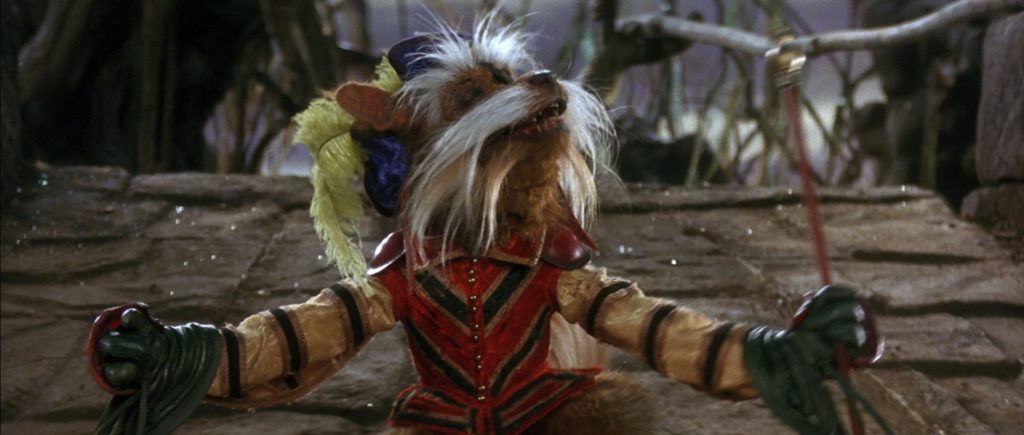
Labyrinth seems to literalise a lot of these claims and ecological considerations of co-existing in haunted landscapes. It imagines a fizzingly vibrant world filled with peculiar spaces and phantasmic creatures. Moreover, it emphasises the need to share space and make kin with them. In doing so Labyrinth announces itself not just as an example of ecocinema, but a text that finds itself entangled quite specifically with the geological and ecological intricacies of living and dying with one another in the Anthropocene. While we may not be able to commune with stones like Ludo, we can certainly be more attentive to the space(s) we share with them. Willoquet-Maricondi argues that ecocinema helps us ‘understand the place and function of humans in relation to the nonhuman world’ (2010, 2), Labyrinth instead complicates the place and function of the human in relation to the nonhuman world. In doing so it raises ethical questions about how best to live in the distorted, seemingly labyrinthine, realm of the Anthropocene.
